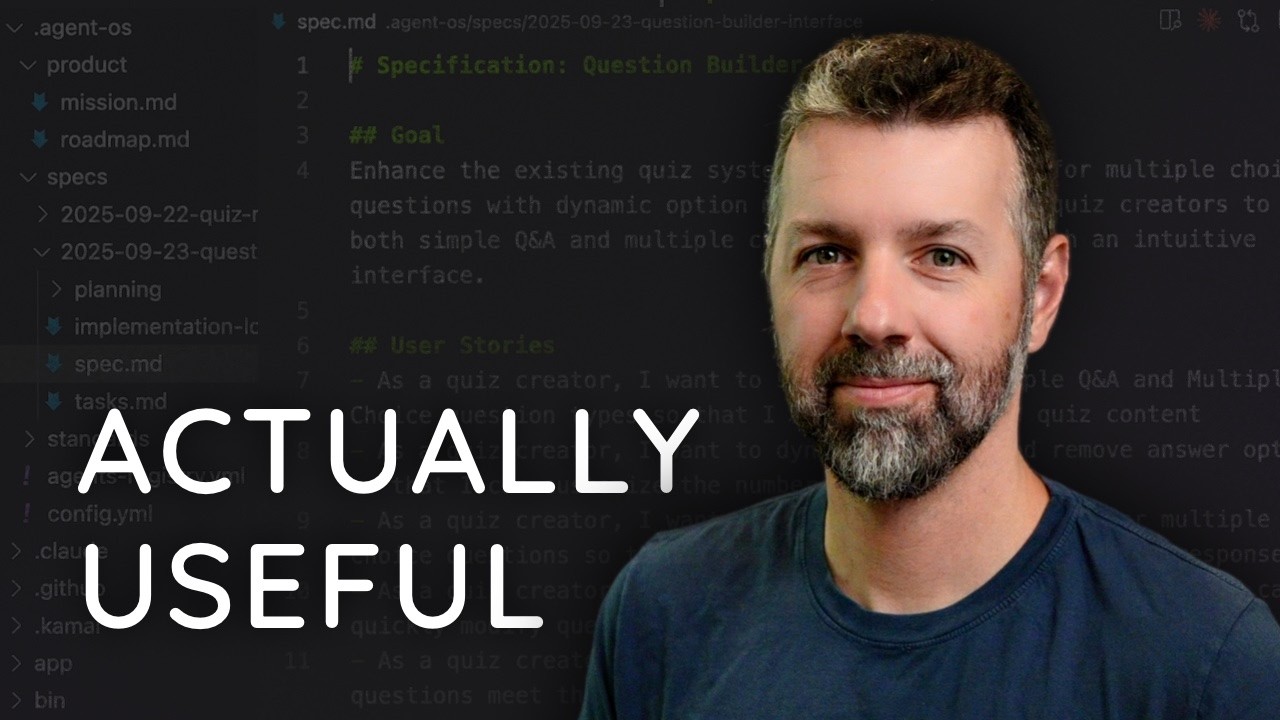The video introduces Spec-Driven Development (SDD), a structured AI-first approach that enhances software building by emphasizing alignment, detailed context, and flexible tooling, exemplified by Brian Castle’s open-source Agent OS system. It addresses key challenges in current AI development tools by incorporating planning, coding standards, and adaptable workflows, ultimately transforming how teams reliably deliver products from idea to customer.
The video discusses a significant shift in AI-first software development called Spec-Driven Development (SDD), a methodical approach that moves away from unpredictable “vibe coding” toward a consistent workflow that reliably delivers products from idea to customer. The speaker, Brian Castle, emphasizes that this approach is transforming not just coding but the entire building process. He introduced Spec-Driven Development alongside Agent OS, his free open-source system designed to power this process. Recently, major industry players like GitHub, Amazon, and others have started adopting spec-driven tools, signaling a broader industry recognition of the importance of specs in AI-assisted development. However, the tooling and processes around SDD are still evolving, which is a positive sign as the industry figures out how best to build in the AI-first era.
Brian identifies three critical issues that current mass-market tools fail to address, which hinder widespread AI adoption in development teams. The first issue is the lack of a structured process for establishing alignment before writing specs. Most tools expect users to generate specs directly from prompts without adequately considering the bigger product vision, trade-offs, design decisions, and edge cases. To solve this, the latest version of Agent OS incorporates a planning phase where an agent collaborates with the user to ideate, ask clarifying questions, and hash out strategic details before creating the actual spec. This phase includes referencing existing code and design elements, ensuring that the spec aligns with the product’s mission and roadmap.
The second issue Brian highlights is the absence of detailed context about coding standards and design patterns in current tools. Simply instructing an AI to build a React or Rails app is insufficient because each project has unique code styles, libraries, and architectural patterns that must be respected. Agent OS addresses this by allowing users to define their coding standards and design choices once, so these are baked into every spec and implementation. This prevents repetitive retraining and ensures that AI-generated code adheres to established best practices. The spec creation process also includes a verification step where another agent reviews the spec for accuracy and completeness, resulting in a concise, one-page specification that includes goals, user stories, functional requirements, and references to reusable components.
The third and most important challenge is the need for flexibility in tooling to accommodate diverse development processes. Different teams and projects have varying workflows, priorities, and team sizes, and each feature might require a different approach—API-first, UI-first, or mobile-focused, for example. Rigid tools that enforce a single process can create friction and hinder adoption. Agent OS 2.0 is designed to be highly adaptable, using sub-agents to orchestrate different phases and tasks according to the specific needs of each spec and project. This flexibility allows teams to maintain their unique workflows while leveraging AI to accelerate development.
In conclusion, Brian stresses that Spec-Driven Development is not just about automating coding but about enhancing the entire product-building process through better alignment, context, and adaptability. He invites viewers to join his upcoming live workshops and subscribe to his newsletter for deeper insights and patterns in spec-driven development. He also encourages watching his related video on achieving flow with Spec-Driven Development, highlighting that despite the involvement of AI agents, developers can still reach a productive flow state that leads to breakthroughs in their products. The video ends with a call to action to keep building with this new approach.
